Understanding and Running a Successful Project
As projects become larger and more complex, the effective management of them
becomes proportionally more significant. For these projects, the consequences
of decisions on, essentially, how well the project is to be managed, with commitment
to communication and coordination, will generally far outweigh the consequences
of how well a specific technical role is performed. The tighter the schedule,
the more this need is magnified.
The required skills are thus quite different from the technical design, engineering
or construction skills usually associated with most projects. Indeed, on a large
complex project there are aspects outside of the scope of these technical areas
that have to be well managed, if the project objectives are to be met. For this
reason, great emphasis must be placed on the project management team approach,
backed by broad based specialized resources.
2.1 The Keys to Success
The key to the successful management of any large project is therefore highly
dependent upon the following:
- A demonstrated leadership through a management organizational form capable
of providing effective planning and management
- The use of a project management system as a model for management philosophy
and strategy
- The use of proven, contemporary project management theory and practice in
planning, organizing, leading and controlling the use of project resources
In the last analysis, the test of effective project management is the degree
to which the project objective has been accomplished on time and within budget
to the satisfaction of the "stakeholders".
This means working with people to achieve results. This is especially true
of highly technical and complex environments such as those involving modern day
construction projects. Consequently, it is essential that the project manager
and his team are sympathetic to, and comfortable with, their cultural and organizational
environment. Therefore, let us first consider the traditional corporate management
environment.
2.2 Traditional Corporate Management
Traditionally, management education has not been concerned with projects but
with the running of an on-going enterprise. Time is not an immediate concern.
Change is minimal and protracted, and hence can be thoroughly programmed and
progressively integrated. The work places of such enterprises are bounded by
traditional hierarchies, lines of authority, centralized control and repetitive,
assembly-line type jobs.
Unfortunately, this traditional corporate management approach breaks down where
projects are concerned. Consequently, new management relationships are required,
which tend to cut across the normal flow of authority and responsibility and
radiate out side of the functional unit. Happily, project management is a much
more exciting and challenging work environment, even though a clear understanding
of its concepts is relatively new.
This is because Project Management is a different type of management
applied to project-type work. However, associated with almost all capital projects
are many people who are not trained in the process of bringing a capital project
on stream. Without embarrassment, I include politicians, owners, sponsors, financiers,
bankers, operators, lawyers, accountants and, I regret to say, even engineers.
Thus, it is essential to establish competent Project Management capability
long before even putting in place appropriate design, engineering or construction
capability. But first let us understand the project manager's organizational
environment.
2.3 The Project Manager's Organizational Environment
Typically, the project group to be managed will consist of consultants, contractors,
specialists, the staff of the owner and the project control team itself. A typical
situation is shown in Figure 1. Each unit or person in
the group has two allegiances or "bosses", the project manager and
his "home" department or firm. This dual reporting relationship is
often referred to as a "matrix" structure and accounts for much of
the complexity of project management on a large project.
Figure 1: Project management in a corporate environment
Ideally, the project manager will receive an "Authority" or "Mandate"
from the project's "Executive", i.e. the party that has the authority
to approve further project funding. This mandate should be to direct all operational
activities including planning, design, procurement, construction and commissioning.
As such, he will have requirements for such project support activities as estimating,
forecasting, scheduling, procurement, project accounting, and progress reporting.
In addition, on a larger project, he will require other more specialized services
such as financial accounting, payroll, systems development, personnel, legal,
public relations and property acquisition. Because they do not normally affect
project control decisions, these activities are usually carried out by independent
departments or companies, not under the project manager's direct supervision.
Nevertheless, if the project manager is to get the quality of information and
service that he needs, he must maintain good communications with all such parties.
The project manager will also be required to report to the Executive on a regular
basis. For this he must render a succinct digest of the available information
on progress, forecast, resource requirements, and actions required.
In contrast, the Executive's interest will tend to focus on expenditure to
date, forecast final cost, and the scheduled commencement of the facility.
2.4 Project Phases
As shown in Figure 2, there are four distinct project
periods which make up the typical project life span.
Figure 2: Project Life Span: Four Basic Periods
æThese four basic periods are:
- Concept - for developing the project parameters in outline
- Development - of the plan and design and definition of the facility
- Execution of the plan
- Transfer of the completed facility over to operations.
These periods or phases may be more easily remembered by the letters C-D-E-F
standing for: Conceive Develop Execute andæFinish.
Figure 2 also shows typical activities which are required
in each phase for building, say, a hydro electric facility or a process plant.
Of special significance is the variation in the level-of-effort (LOE), which
is associated with these activities, and which is required to conduct a project
through its life span. Note especially that "approvals" are called
for at the end of each of the first two phases. These are really like "gates"
between major phases of the project, also known as "major milestones",
or "Executive Control Points".
2.5 Executive Control Points
Every project should have Executive Control Points acting like closed gates
which only open following Executive Approval, see Figure 3.
At these points, the project manager presents certain predetermined "deliverables"
to the Executive that will enable them to make an informed decision on a "go"
or "no-go" basis for further work.
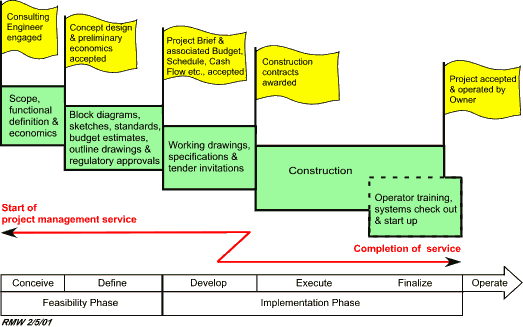
Figure 3: Project Life Span Control Gates
It must also be emphasized that it has been estimated that it costs about ten
times as much to implement a change in each succeeding phase. Hence, during construction,
changes (and consequent delays) will cost ten or more times as much to implement,
compared to making the same changes during the planning phase.
Therefore, these points provide the opportunity for the Executive to exercise
a high level of control over the shape and timing of the project. The Executive
can thereby ensure that either the project is developing in a manner consistent
with their objectives, or the project can be modified with minimum upset if the
objectives have changed. It is also the opportunity for the Executive to provide
a morale boost by injecting enthusiasm, excitement and discipline into the project
team.
Equally, these formal approvals provide the project manager with his authority
to drive the project through to the conclusion of the ensuing phase. It is also
his opportunity to ensure that the Executive is behind him and that he is proceeding
in the right direction.
Undoubtedly, the most important control point in the project life cycle is
reached at the conclusion of the development phase because this marks the project's
transition from feasibility to implementation. At this point, a project "go"
decision must be based on sound and well documented information. This information
should be presented in a comprehensive document referred to as the Project Brief.
It is the means whereby the Executive know precisely what they are getting.
2.6 Project Brief
The Project Brief, when approved, becomes the prime source of reference for
the project implementation phase. A good Project Brief will include:
- Executive summary
- General statement of business aims and objectives
- Technical approach
- Statement of project scope
- Regulatory approvals and requirements
- Preliminary design sketches, block diagrams, standards; o project team organization
- Implementation schedule
- Procurement plan
- Project estimate and proposed appropriation budget
- Other resources required from the sponsoring organization (e.g., land, space,
staff, etc.)
- Financial statement and economic projections
- Cash flow projection
- Justification, alternatives; and
- Areas of uncertainty and risk.
2.7 Project Management Functions
The management functions involved in a project typically include scope, quality,
time, cost, risk, procurement of human and material resources, and communications
management. Each represents a separate discipline calling for special training,
and the requirement for each function depends on the size and nature of the project
in question. These functions are now considered to be part of the "Project
Management Body of Know ledge" or PMBoK as it is called, as developed by
the Project Management Institute.
This subject is discussed in rather more detail in Section
4. A copy of the PMBoK is available from the Project Management Institute,
in Pennsylvania, U.S.A.. However, the functional descriptions given in Appendix
A will be more familiar to construction people.
2.8 Project Control Cycle
The basic cycle of management control can easily be remembered by the mnemonic
"POEM" standing for: Plan, Organize, Execute,
Monitor-and-control.
Plan - The first step is to plan the project with respect to
scope, quality, time and cost. What precisely is to be done? Why? If it is, say,
a new plant, what is the purpose and process in the plant? How is the job to
be done? Why should the project be done one way rather than another? Indeed,
why should it be done at all? Where is it to be built? Who will design and construct
it? What resources in terms of materials, manpower, finances and time are required?
What risks are involved? What strategies are required to deal with unplanned
occurrences?
Organize - The second basic step is an extension of the first.
A careful analysis must be made of the various activities required in planning
and executing a project, to provide a closely related project team structure.
For every project activity (e.g. programming, estimating, design, planning, procurement,
construction) there must be a very clear definition of who is responsible, and
who has the authority to execute that activity. That person must also have a
very clear idea of its scope, quality, time and budget.
Execute - The methods by which the Plan is executed or implemented
are critical. No project manager (or other member of the project team) will be
successful unless he understands the basic needs of human beings, their strengths
and weaknesses, mental and social abilities, and how to weld a complex mixture
of humans into a dynamic and productive team. The single most important characteristic
of a successful project manager is his ability to manage people.
Monitor and Control - Continued monitoring, reporting and fore
casting must take place during project implementation, and the forecasts compared
to the Plan. Deviations must immediately receive management attention, either
by reallocation of resources or modifications to the Plan (with Executive approval
if the project objectives are affected). Without a detailed Plan, there is no
baseline for comparison, no determination of deviation, and hence no satisfactory
basis for corrective action.
Clearly then, a successful project management system is one which monitors
and responds by a control action as early as possible after an event. Figure
4 shows the elements of a project control system.
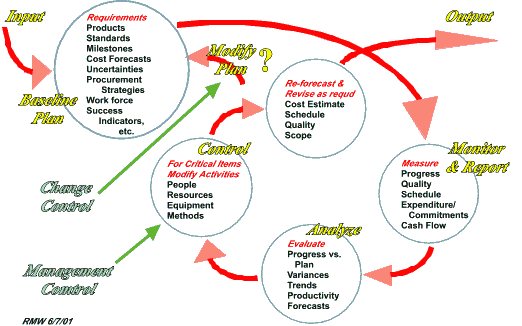
Figure 4: Elements of a project control system
2.9 Function-Process-Time Relationship
æThe relationship between the functional components, the control process and
the project phases may be viewed as three-dimensional. This relationship is shown
in Figure 5.
The project life cycle is shown on the X axis with its classic four generic
project phases, together with the typical variation in level-of-effort with which
they are generally associated. On the Y axis are the major project functions
to be managed, which in fact I believe apply to anyæ project, although
they may vary in importance according to the field of application (industry).
In other words, if project management is not paying attention to each and every
one of these, then they are not so likely to get the best out of the project.
On the Z axis is shown the traditional high frequency input-process-output-feedback
control cycle.
æThe point is that this control cycle has to be applied to every one of the
major functions as each of the latter are progressively "managed" through
the project life cycle in order to reach the project's goals and objectives successfully.
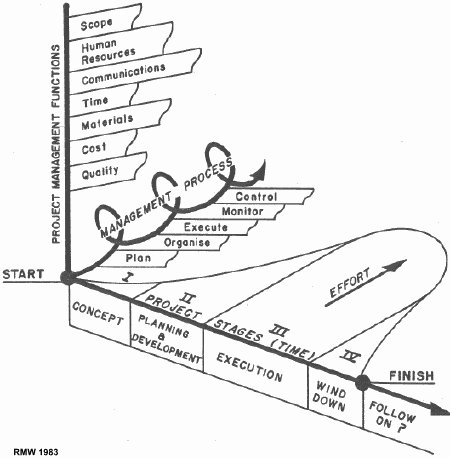
Figure 5: The Function-Process-Time relationship
2.10 Project Manager's Objectives
æIt follows from the foregoing that the Project Manager's personal objectives
must be to:
- Attain the willing commitment of people to assigned tasks
- Achieve the coordination and collaboration of different work groups, responsibility
centers, and entire organizations, including those of the owner
- Achieve cooperation by placing a high premium on reliability and timeliness
of information, and by discouraging unnecessary or irrelevant information
- Steer the project to completion in an orderly and progressive manner
- Ensure that trade-offs between scope, quality, time and cost are satisfactory
and acceptable, and are seen to be so, and
- Encourage the development of personal and professional skills amongst the
project participants
2.11 Work Breakdown Structure
The process of project control described earlier requires the establishment
of a firm base line defined in terms of scope, quality, time and cost on a compatible
basis, and in units that can be more readily handled. One of the more important
and powerful techniques for managing a large complex project, therefore, is the
Work Breakdown Structure (WBS), which greatly facilitates control.
A Work Breakdown Structure (WBS) is a task-oriented "family tree"
of activities, which organizes, defines, and graphically displays the work to
be accomplished.
By means of a WBS the scope of the project can be broken down into a suitably
coded structure that identifies manageable segments with clearly assigned responsibilities.
See Figures 6a, b, and c
for a typical example.

Figure 6a: Top level of a process plant project WBS
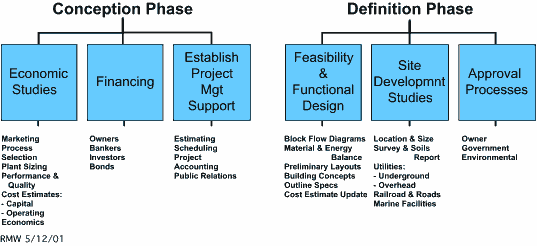
Figure 6b: Detailed WBS for the Conception and Definition phases
To be effective a WBS must:
- Establish an information structure for describing the project's scope in
entirety
- Serve as an effective means of communication to integrate the objectives
and activities of all the internal and external organizations involved in the
project
- Represent the planning of the project, step by step
- Separate sequential and parallel activities assigned to different groups
who will schedule, measure and control their own performance, and
- Reflect the procurement strategy during the various stages of the project's
life cycle
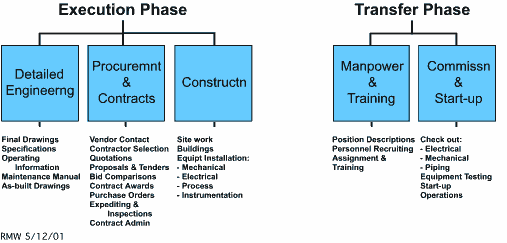
Figure 6c: Detailed WBS for the Execution and Transfer phases
In practical terms this WBS and corresponding coding also requires:
- Early implementation
- Flexibility and expandability
- Universal application
- Simplicity, and
- Capability of summation.
The "manageable segments" of the project referred to above, are called
Work Packages. Thus, a Work Package describes the work to be performed by a specific
organizational unit, and serves as a vehicle for monitoring and reporting on
progress, cost and schedule. See Appendix B for essential rules.
All work packages fall into one of three different categories, namely:
- Discrete Tasks which have a specific end result or objective. These normally
cover 60 to 75 percent of the total work in a project.
- Apportioned-effort Tasks which can be directly related and apportioned to
discrete tasks. Examples include quality control or inspection. These tasks
are required in support of the discrete tasks, and hence, their schedule and
budget can be related to the discrete tasks.
- Level-of-effort Tasks which have performance standards rather than specific
end results. These consist mainly of the overhead accounts, e.g., management,
administration, liaison, coordination, etc. These tasks are characterized by
relatively level, time-phased budgets and are not time-limited as in the case
of the discrete tasks.
2.12 Prerequisites for a Successful Project
The Project Executive has a vital role to play and should insist on the following:
Executive Support - The Executive must clearly demonstrate support
for the project management concept by active sponsorship and control.
External Authority - The project manager must be seen as the
authoritative agent in dealing with outside parties, and be the responsible and
single formal contact with them.
Internal Authority - The project manager must have the necessary
managerial authority within his organization to ensure response to his requirements.
Commitment Authority - The project manager should have capability
and authority to control the commitment of funds within prescribed limits.
Competence - The project manager and his team members must be
competent. Other functional personnel assigned to the project must also be competent.
Project Team - The project manager should have a say in the assembly
of his project team, which will help him to obtain their personal commitment.
The private sector should build up the best source of expertise.
Project Manager Involved in All Major Decisions - No major technical,
cost, schedule, or performance decisions should be made without the project manager's
participation.
Management Information Systems - Effective project management
information and control systems must be in place, preferably with third party
observation, scheduling and estimating resources.
While the foregoing do not necessarily guarantee success, their absence will
certainly make success more difficult to attain.
|



